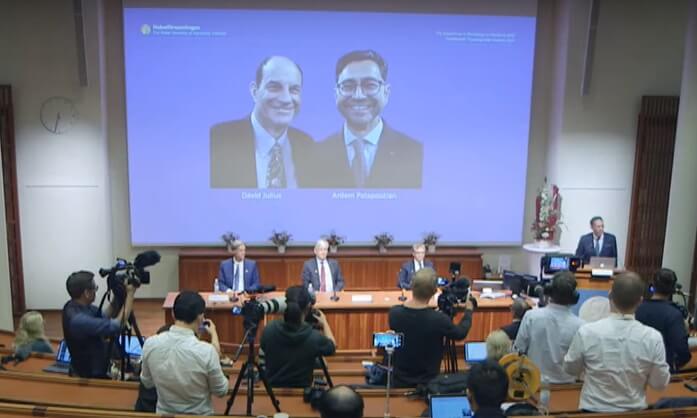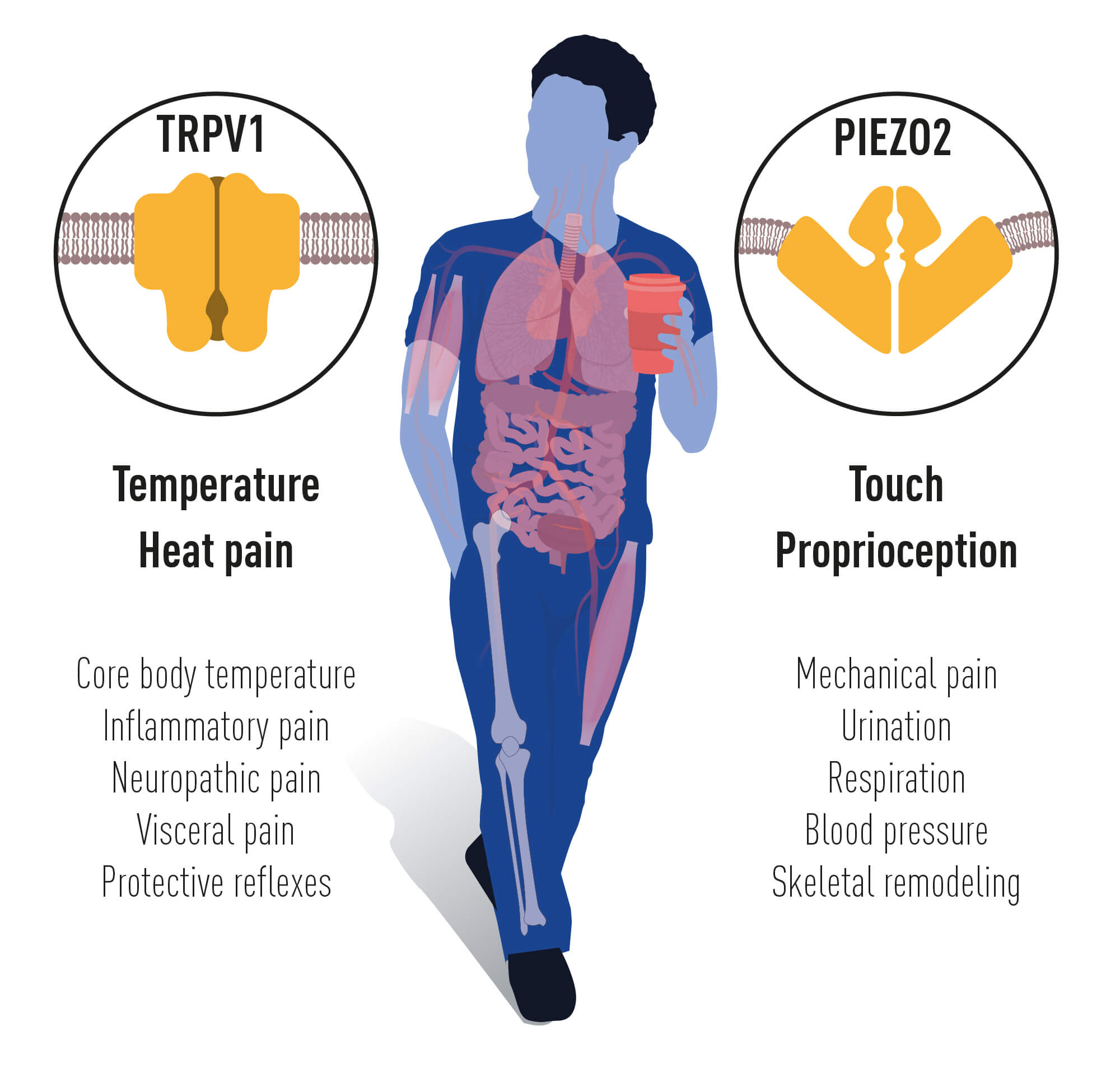Discoverers of Temperature and Touch Receptors Win 2021 Nobel Prize in Medicine
The Nobel Prize in Physiology or Medicine for the year 2021 was jointly awarded to David Julius of the University of California, San Francisco, and Ardem Patapoutian of Scripps Research Institute for their discoveries of receptors that enable humans to feel temperature and touch.
“This year’s Nobel Prize has to do with our ability to feel temperature and touch, a sense which is called somatosensation,” the Nobel Assembly announced on October 4th in Stockholm, Sweden.
“Our ability to sense heat, cold, and touch is essential for survival and underpins our interaction with the world around us…, but how are nerve impulses initiated so that temperature and pressure can be perceived?” read a press statement.
“The groundbreaking discoveries of the TRPV1, TRPM8, and Piezo channels by this year’s Nobel Prize laureates have allowed us to understand how heat, cold and mechanical forces can initiate the nerve impulses that allow us to perceive and adapt to the world around us,” it added.
 Winners of the 2021 Nobel Prize in Physiology or Medicine announced by the Nobel Assembly
Winners of the 2021 Nobel Prize in Physiology or Medicine announced by the Nobel Assembly
Discovery of Temperature Sensing Receptors
The curiosity in exploring how we feel senses has existed for ages. In the 17th century, French philosopher René Descartes had envisioned threads connecting different parts of the skin with the brain. Ensuing discoveries revealed the existence of specialized sensory neurons. In 1944, Joseph Erlanger and Herbert Gasser received the Nobel Prize for discovering different types of sensory nerve fibers that react to distinct stimuli.
David Julius utilized capsaicin, a pungent compound from chili peppers that induces a burning sensation to identify a sensor in the nerve endings of the skin that responds to heat. Capsaicin was previously known to activate nerve cells, causing pain, but the mechanism was not yet understood.
Julius and his co-workers created a library of millions of DNA fragments corresponding to genes expressed in the sensory neurons, which can react to pain, heat, and touch. They then expressed individual genes from the library into cultured cells that do not normally react to capsaicin. Using this approach, they identified the causative gene that made cells capsaicin-sensitive. This gene was found to encode a capsaicin receptor that was later named TRPV1. He later found that TRPV1 is a heat-sensing receptor that is activated at temperatures perceived as painful.
The discovery of TRPV1 was a major breakthrough and led to the identification of additional temperature-sensing receptors. Independently of one another, both David Julius and Ardem Patapoutian used menthol to identify TRPM8, a receptor that was shown to be activated by cold, the Nobel committee said.
Discovery of the Mechanosensitivity Receptors
 Illustration: © The Nobel Committee for Physiology or Medicine
Illustration: © The Nobel Committee for Physiology or Medicine
“This really unlocks one of the secrets of nature,” Thomas Perlmann, the secretary of the Nobel Assembly and the Nobel Committee, said the discovery. “It explains at a molecular level how these stimuli are converted into nerve signals. It’s actually something that is crucial for our survival, so it’s a very important and profound discovery.”
The prestigious award comes with a gold medal and prize money of 10 million Swedish kronor (over US$ 1,145,000).
©www.geneonline.com All rights reserved. Collaborate with us: service@geneonlineasia.com








